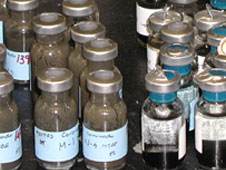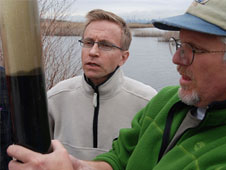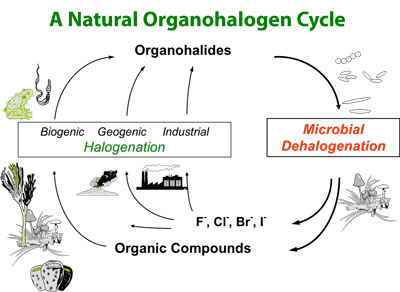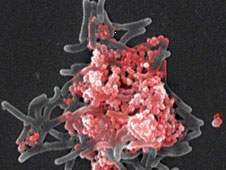List of Projects

Anaerobic bacteria with an unusual appetite for methyl tert-butyl ether (MTBE).
Keywords: MTBE, anaerobic bacteria, remediation
Our current works aims to identify novel anaerobic bacteria and their genes responsible for the transformation / degradation of MTBE in contaminated aquifers and sediments in order to develop tools for monitoring natural attenuation and enhancing biodegradation of MTBE in the environment.

Anaerobic degradation of lingo-aromatic compounds to methane.
Keywords: Aerobic degradation, lignocellulose
The goal of our work is to develop a better understanding of the processes involved in the anaerobic degradation of lignin-derived compounds so that they might be applied to any future bioenergy efforts involving microbial methane production from lignin-residues. Our objective is to identify the microbial communities and genes responsible for the degradation of phenolic compounds.

Anaerobic dehalogenation of halogenated organic compounds: Novel strategies for bioremediation of contaminated sediments.
Halogenated organic compounds constitute one of the largest groups of environmental chemicals and the development and production of new halogenated organic compounds, including aliphatic, aromatic and heterocyclic derivatives, has increased over the last century.

Characterization of Bacterial Endosymbionts That Mediate an Organohalogen Cycle in Marine Sponges.
Keywords: Organohalides, biogeochemical activity
We aim to characterize the diversity and specificity of dehalogenating Desulfoluna symbionts; determine whether anaerobic debrominating bacteria form stable or dynamic populations within the sponge animal; and elucidate the in vivo activity of sponge-associated dehalogenating bacteria.

Life in the frozen state: Diversity and dynamics of bacterial communities active in Arctic tundra soils.
Our current work is focused on understanding how the combination of temperature and nitrogen input/availability controls the bacterial communities active in carbon re-mineralization in Arctic tundra soils.

Microbial respiration on selenium and arsenic oxyanions.
We seek to elucidate the role of Se and As-respiring microorganisms in the biogeochemical cycling of these elements and determine how their activity is impacted by the redox environment.


